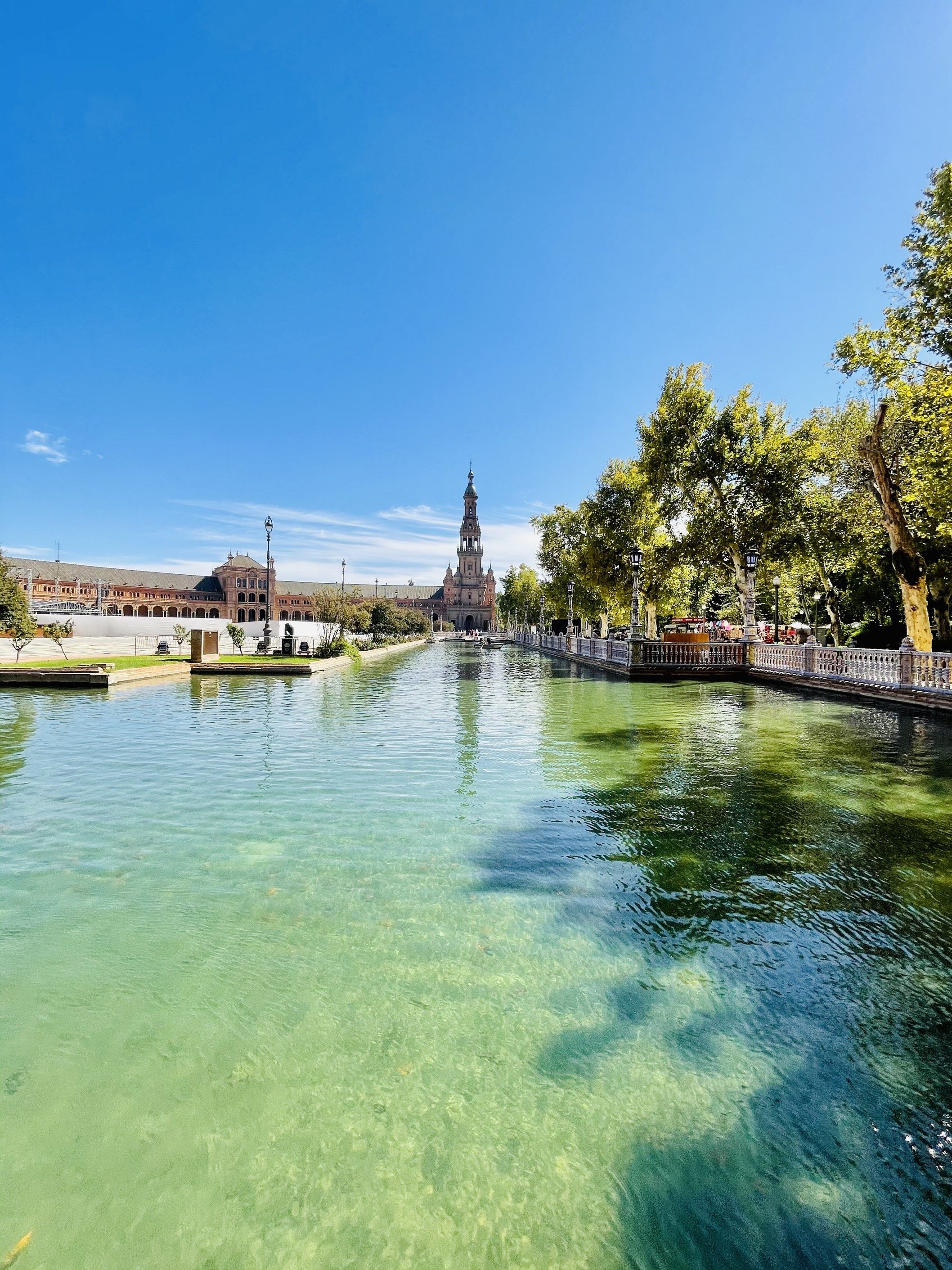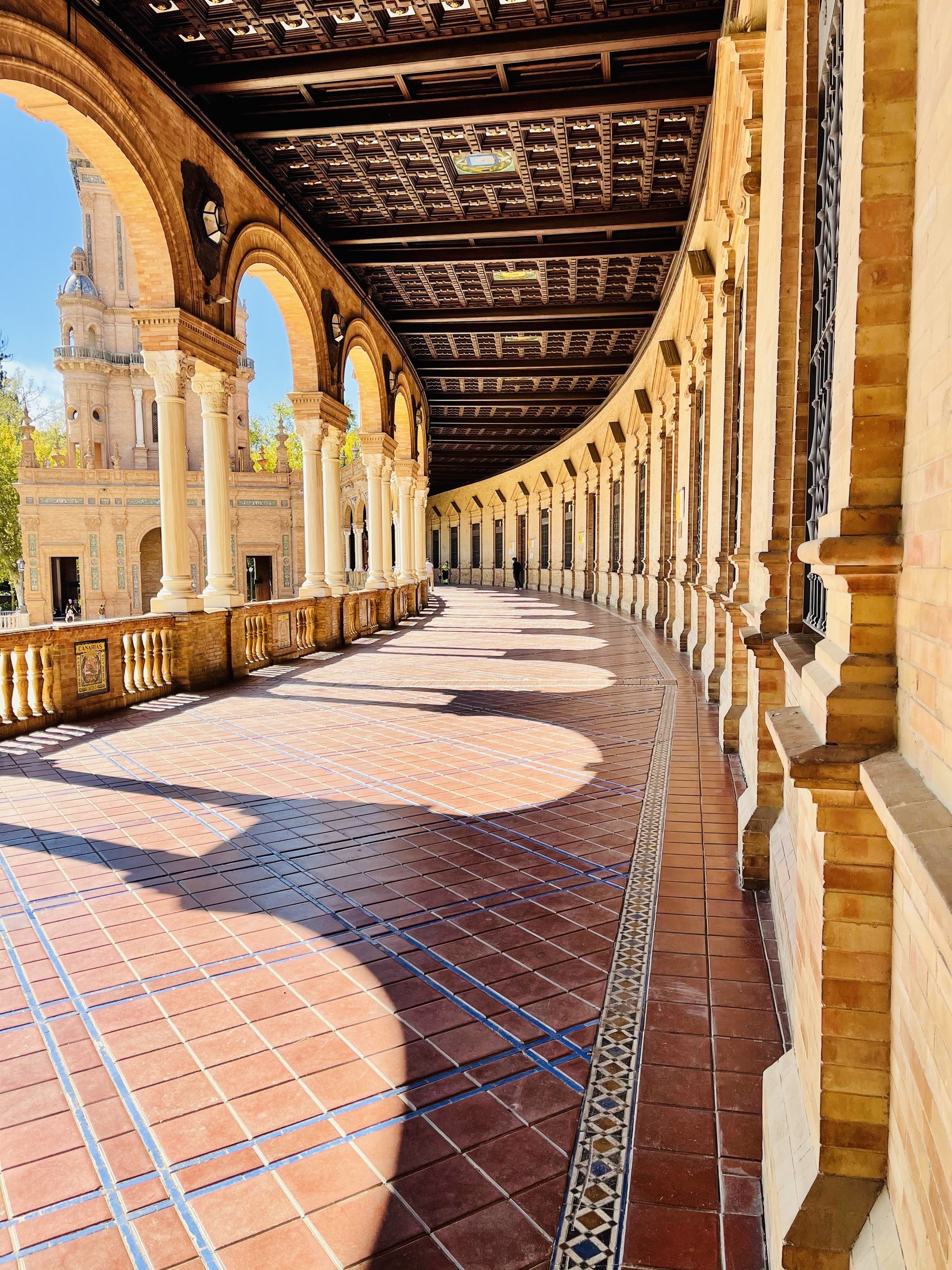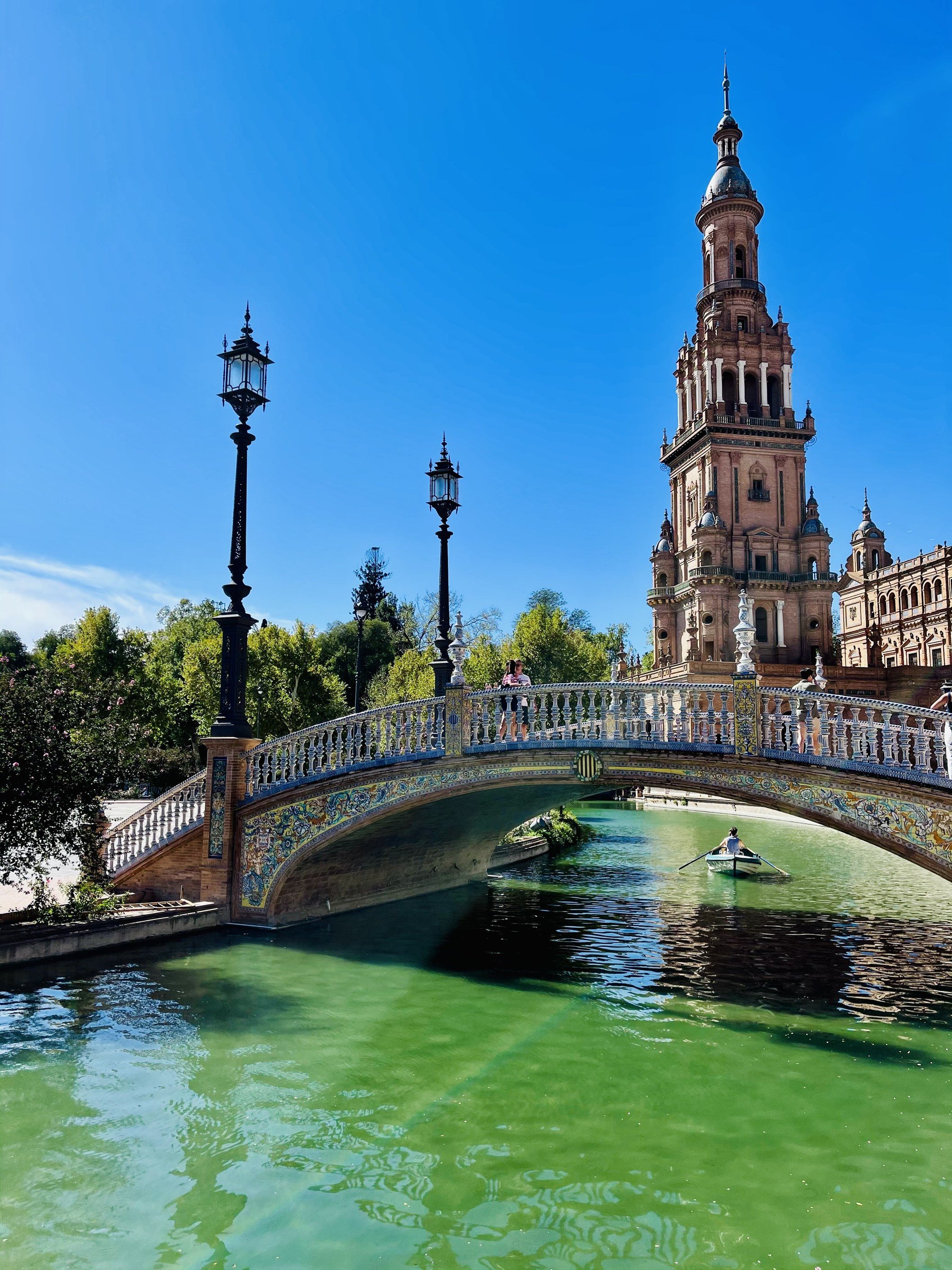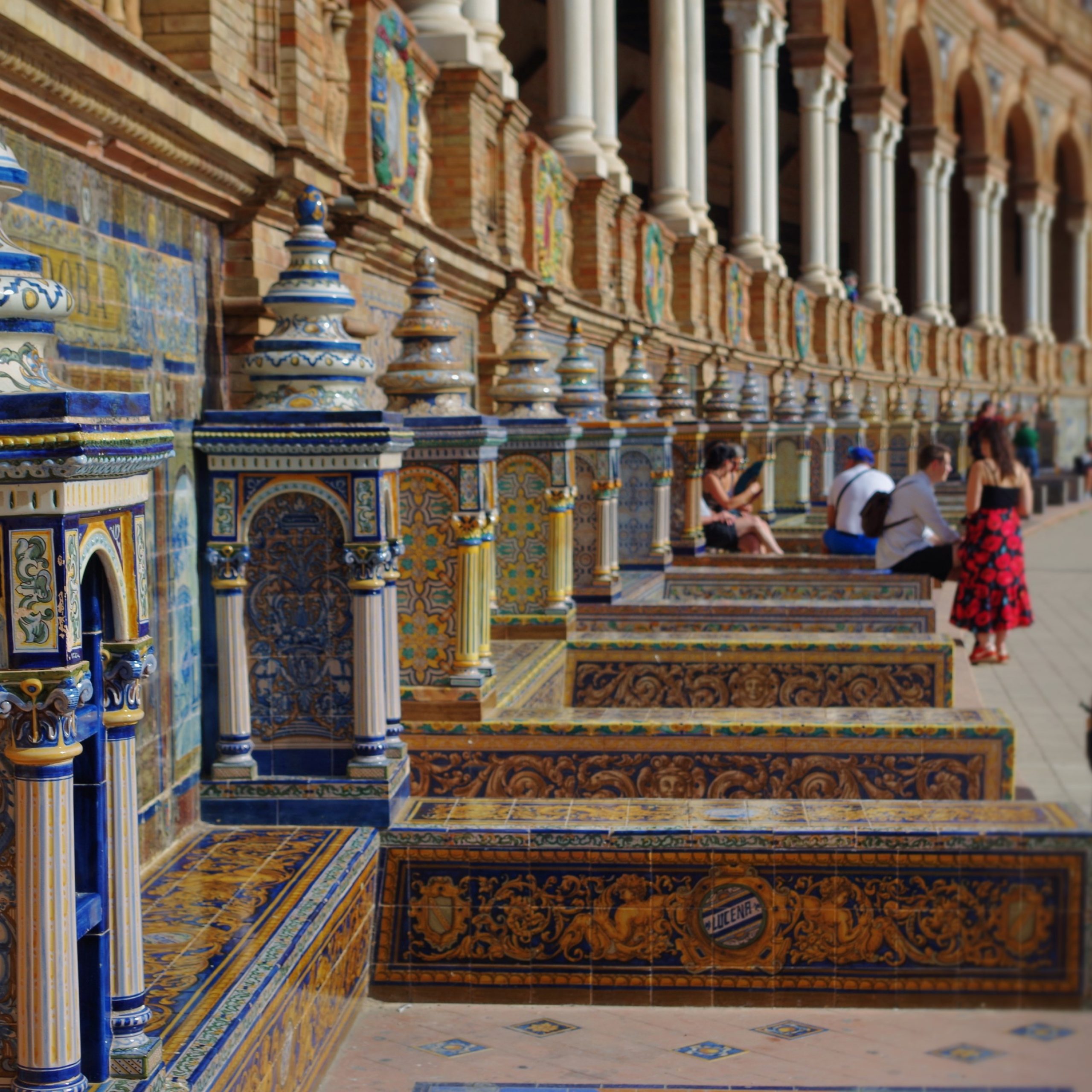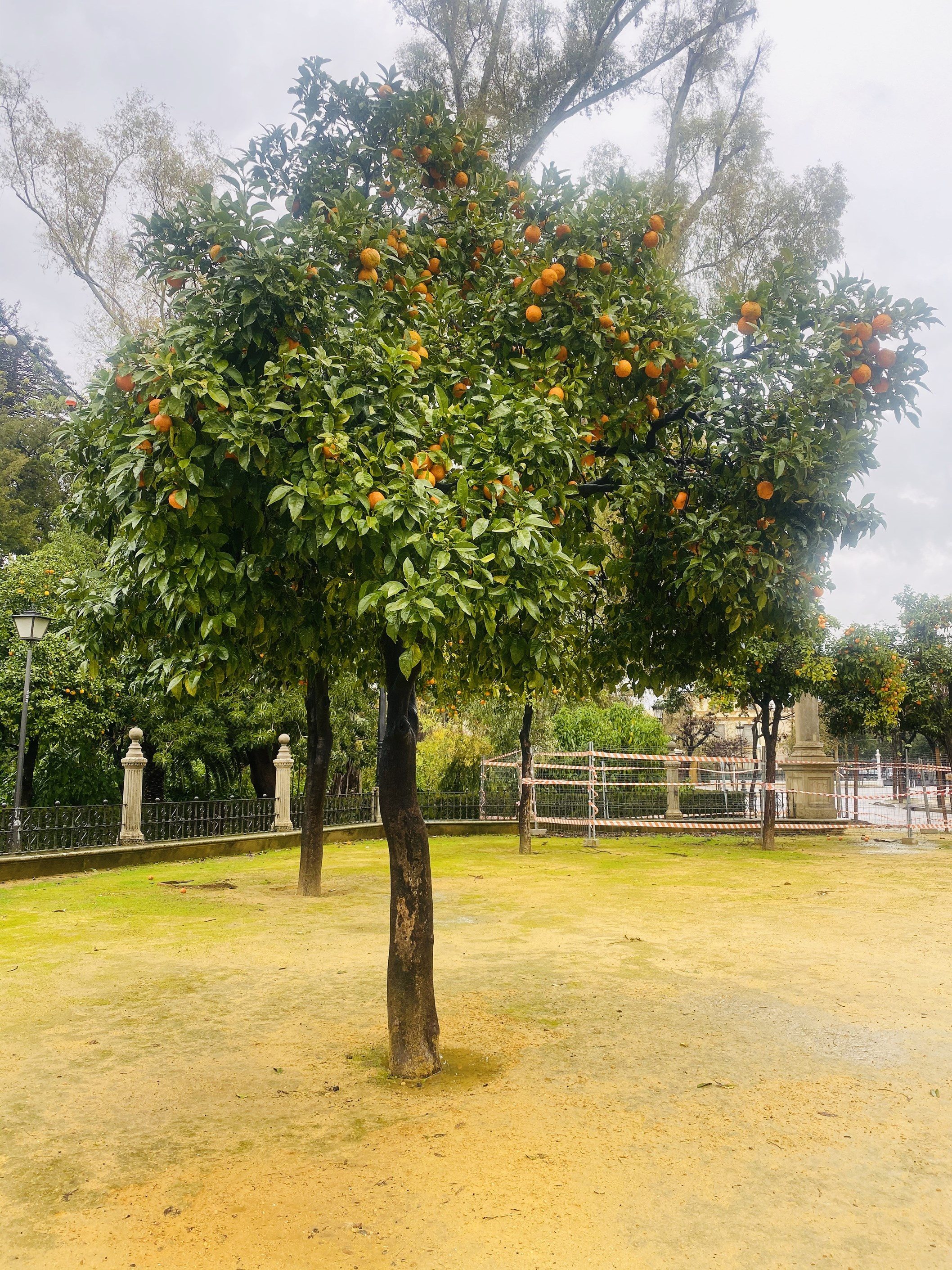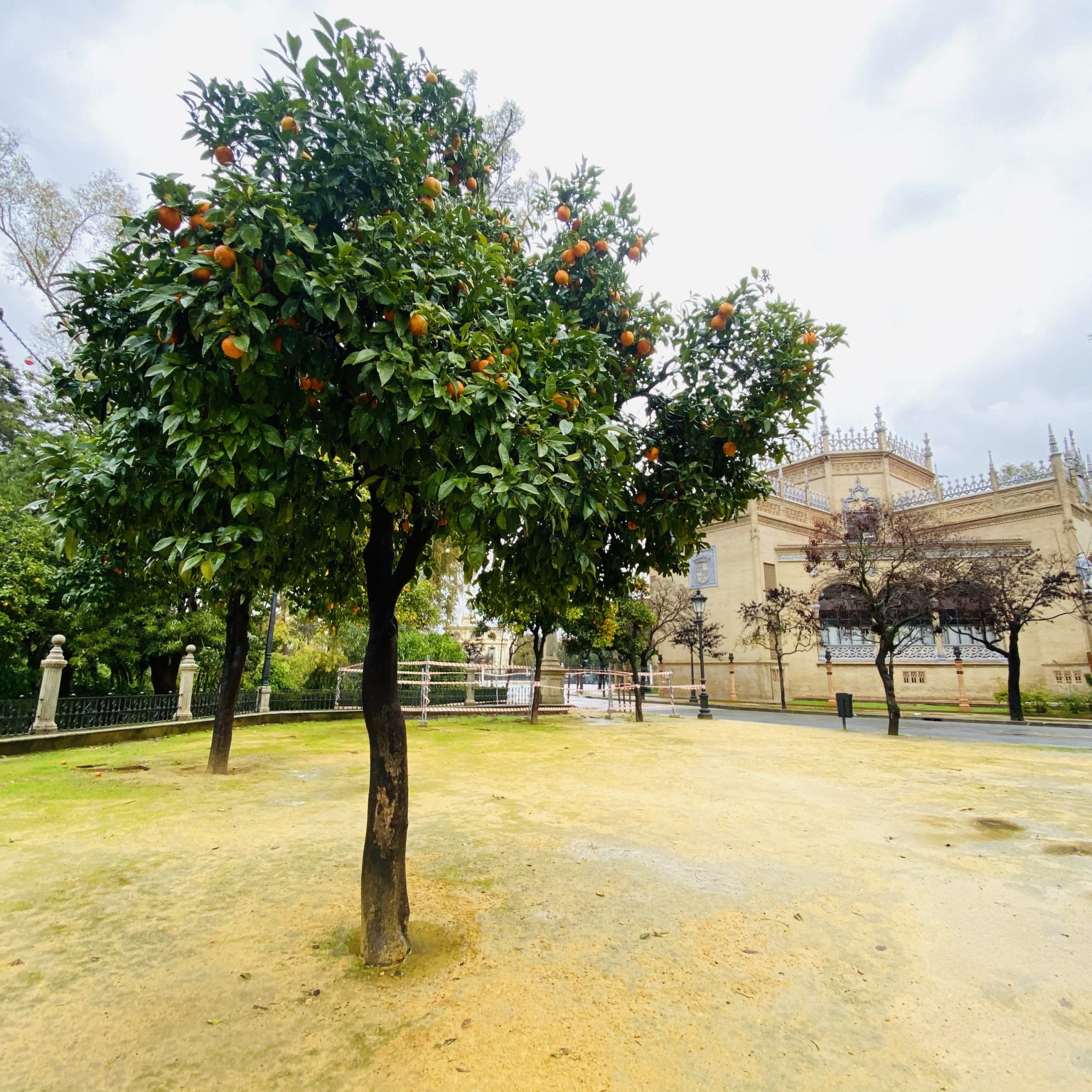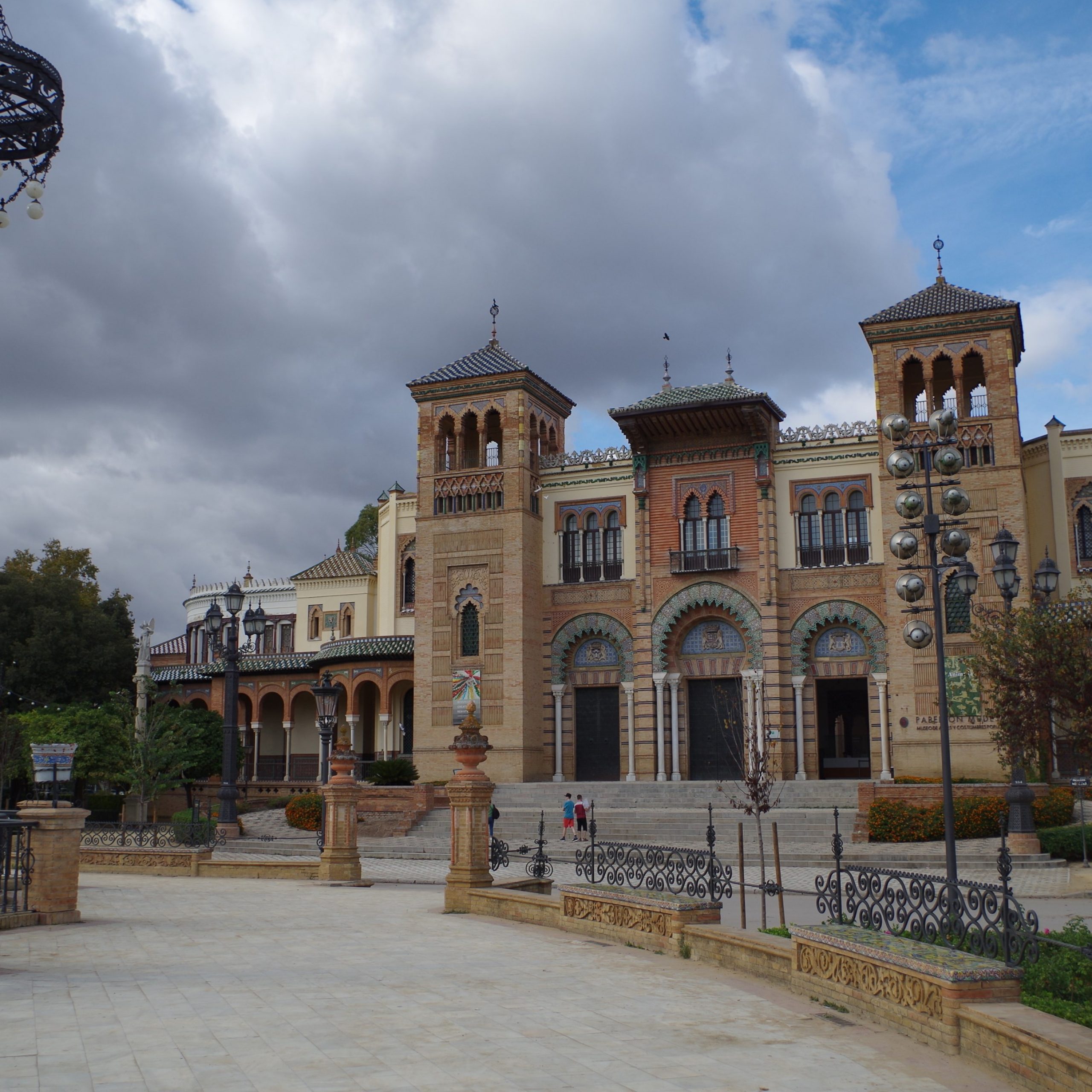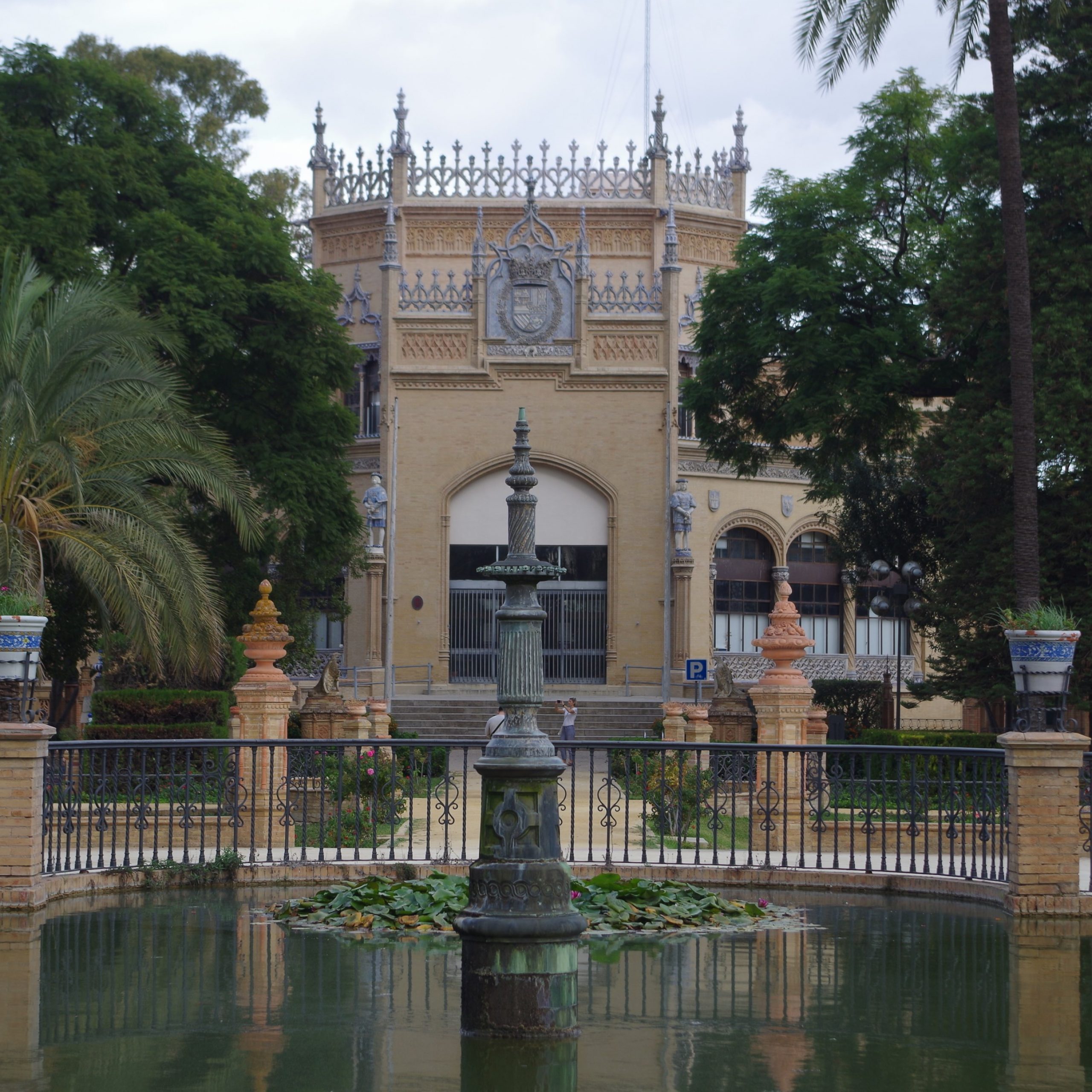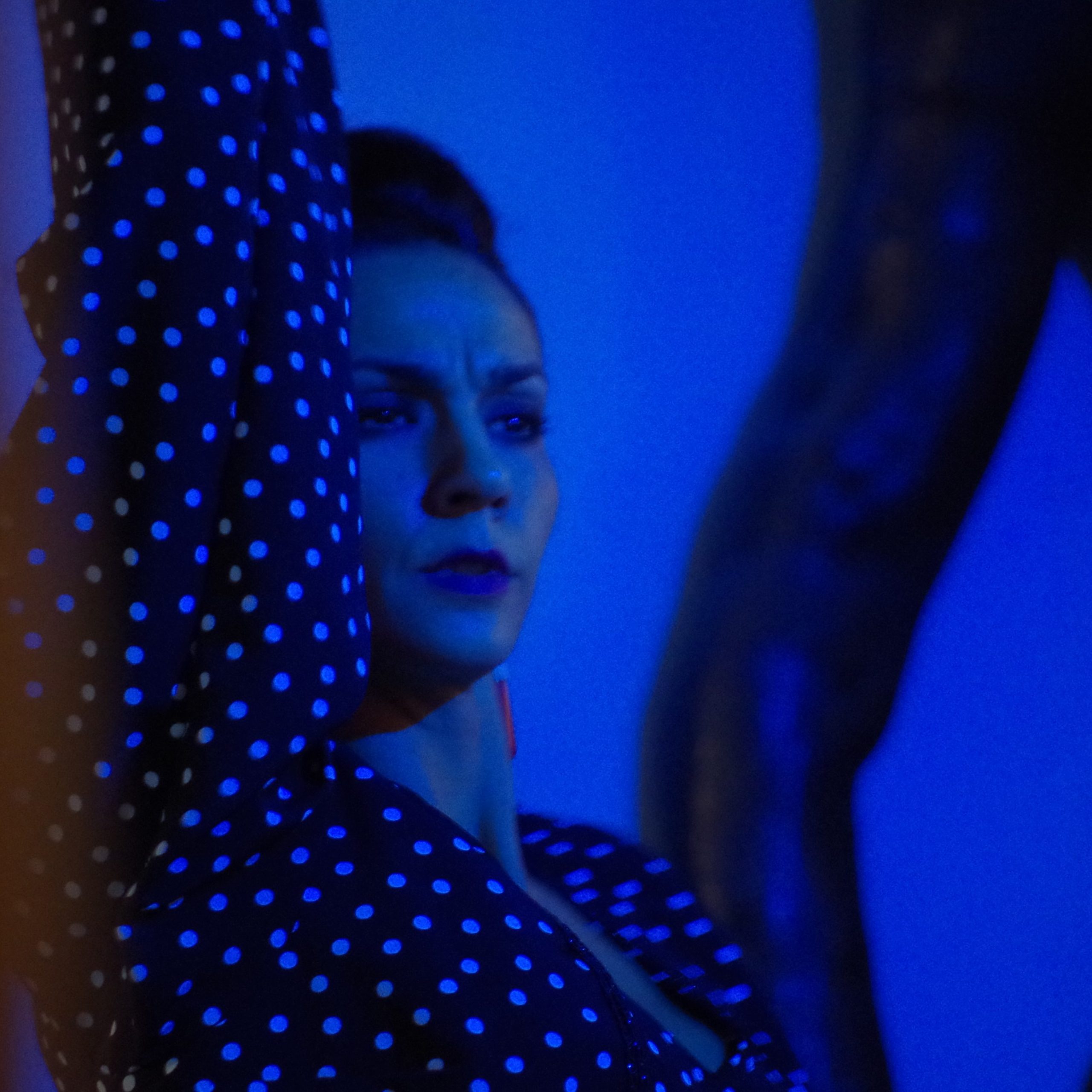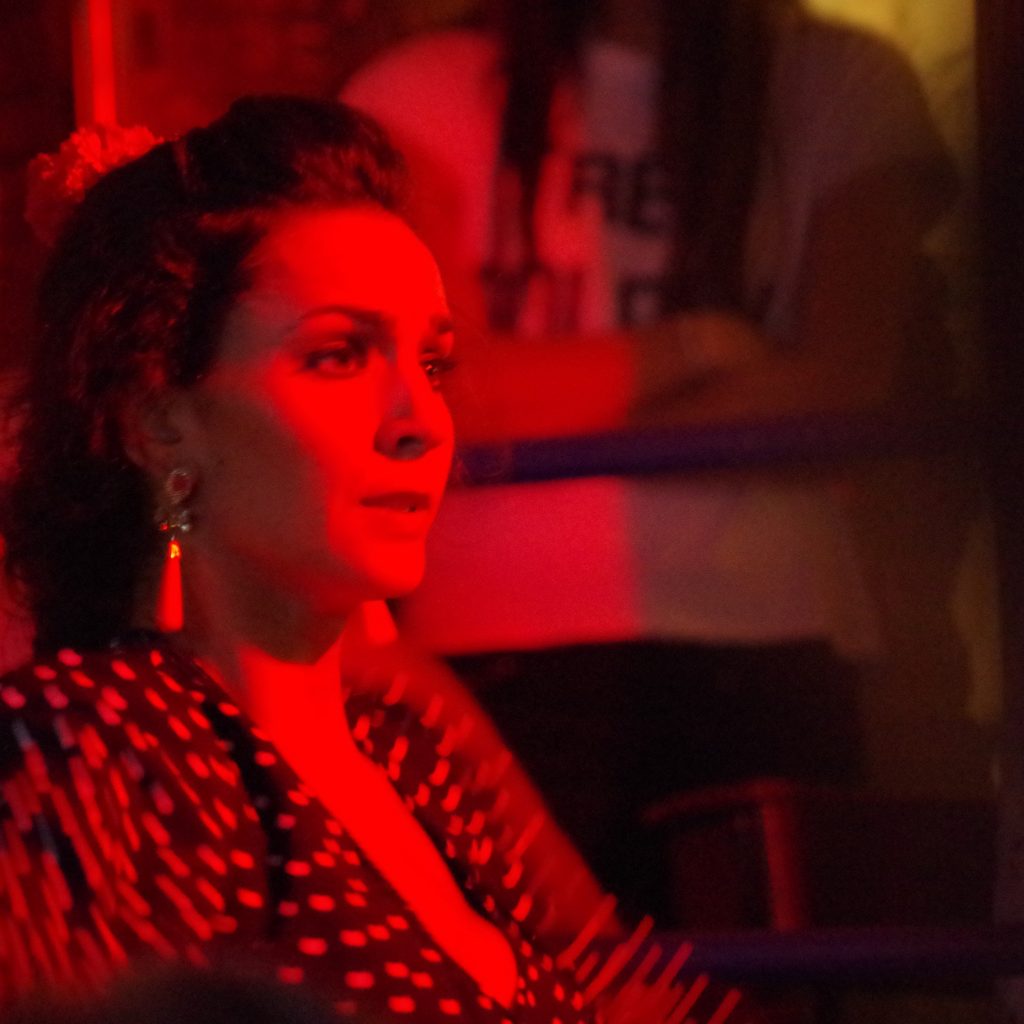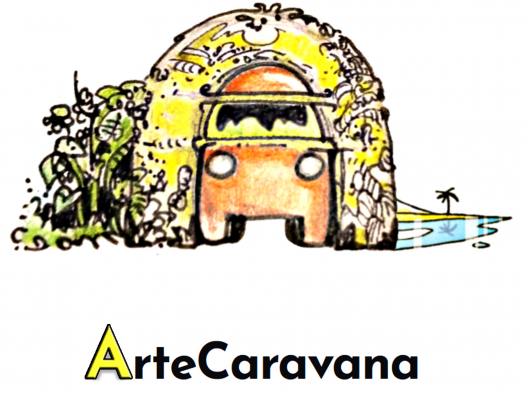
Leather handicraft straight from the workshop on four wheels
Wandering through Iberian lands
A one-day trip to the capital of Andalusia – Seville part II – Murillo Gardens, Spanish and American Square, Maria Luisa Gardens
16/10/2021 1:49 PM
Seville will surely surprise many of you, it is a city with the status of a double capital – not only the province of the same name, but also the entire Autonomous Community of Andalusia (the second largest autonomous community in Spain after Castilla y Leon). It is the fourth largest city in Spain after Madrid, Barcelona and Valencia. It is not located on the coast but on the river bank of Guadalquivir, if we wanted to sail to the ocean we would have to cover 90 km.
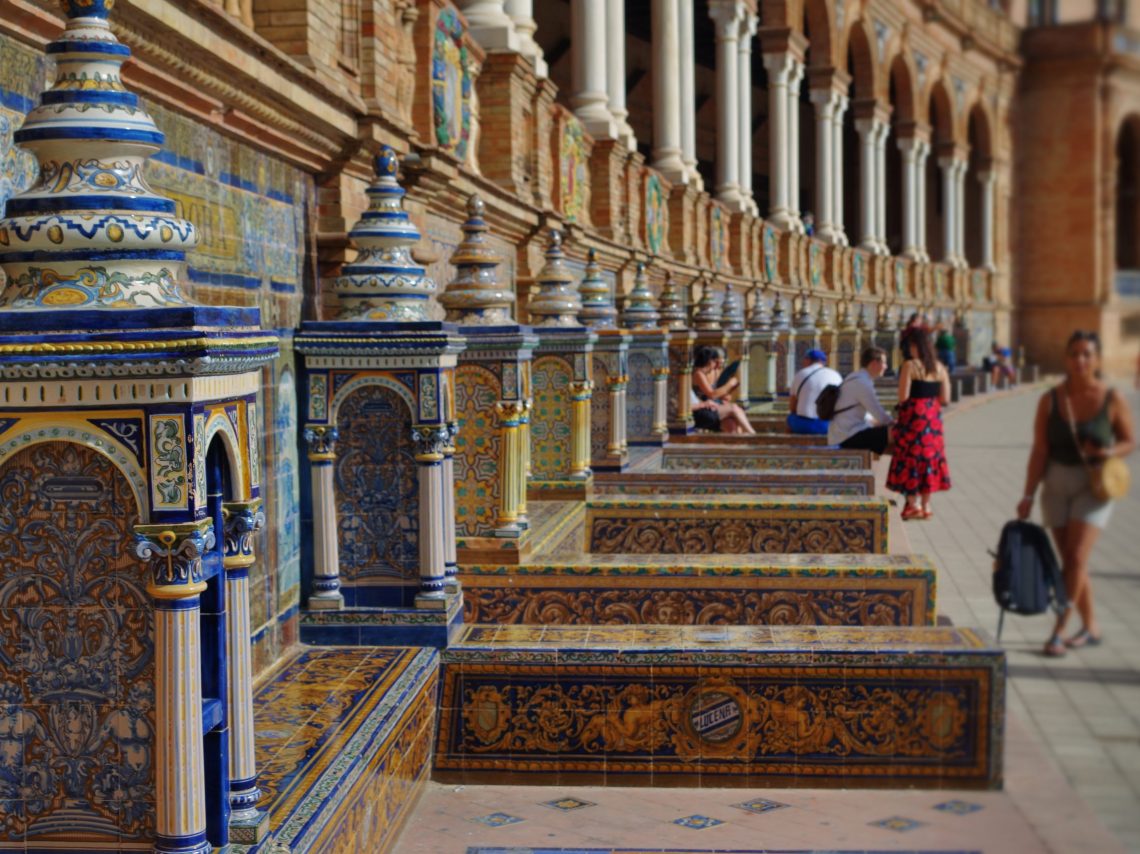
INTRODUCTION
You can read about the history of Seville here, and here we took you to the Triumphal Square, where you will find three monuments inscribed on the UNESCO World Heritage List – the General Archive of the Indies, the Alcazar (Royal Palace) and the Seville Cathedral. Then we went to the Santa Cruz (Holy Cross) District, also known as the Jewish District. Here you shouldn’t mind getting lost for a moment among the narrow streets and definately you can enjoy some shade, which unfortunately is hard to find in other parts of the city, and perhaps eat some typical Andalusian tapas. The zone is full of atmospheric pubs and bars and we can often listen to music played live by street artists.
Murillo Gardens
After reaching the Holy Cross Square (Plaza de Santa Cruz), we turn right and enter through the iron gate to the Murillo Gardens. They border the gardens of the Royal Palace, Alcazar de Sevilla, which, let me remind you, portrayed the kingdom of Dorne in the famous HBO series "Game of Thrones". (photo below from the internet).

We have already mentioned Murillo as well - he is a baroque painter born in Seville. The gardens feature various types of trees, including a 300-year-old ficus and a huge amount of orange trees. Visitors always ask if you can eat the fruit of these trees - unfortunately not. Oranges are bitter and distasteful, but blooming oranges smell beautiful. The scent of the blossoming orange tree has got its own name - azahar (this is generally the name of orange, lemon and citron flowers). They bloom in the spring, most often it coincides with the celebration of Holy Week when Sevilla smells of azahar and incense. Easter in Spain is celebrated a little differently than in Poland. Processions are organized from Monday to Holy Saturday. The celebration of Holy Week in Seville is one of the most important events, there are parades with the so-called pasos, i.e. wooden platforms on which there are figures depicting individual scenes from the Passion of Jesus (some of them are considered works of art). Processions are organized by religious fraternities. Perhaps the most famous member of such a fraternity is Antonio Banderas.
Orange trees were planted for decoration and shade, and while we are talking about oranges, it is worth mentioning a unique drink - burnarj, the only sparkling wine made entirely from oranges in the world. It is produced, of course, in Andalusia, in the Guadalquivir river valley (where Seville lies, but also Cordoba). If we like such flavors, we can also reach for orange wine - it is an aromatized wine to which orange peel is added during the maceration process.
Christopher Columbus Monument

We walk towards the statue of Christopher Columbus. In fact, the monument itself does not represent Christopher Columbus, it just has that name and was created for the EXPO exhibition, which took place in 1992 (you can find a few more words here). These are two columns "connected" by one of the ships on which Columbus sailed on his first voyage. Columbus sailed on two caravels, which were called Pinta and Nina, and one carrack, the Santa Maria flagship. It was from the La Pinta that the cry "Earth!" was heard, screamed by a sailor from a town of Lepe but since he lived in the Triana quarter of Seville, he ahs been called Rodrigo de Triana.
On both sided of the monument, there are the names of the Catholic Kings who agreed to organize Columbus’ expedition, the lion, in turn, represents the success with which it ended. I will certainly devote a separate article to Columbus in the future.
Royal Tobacco Factory
From the monument, we turn right, towards the river, and after a few minutes we pass Royal Tobacco Factory (Spanish: Real Fábrica de Tabacos) built in the 18th century by Sebastian van der Brocht. It was the first tobacco factory in Europe and in its heyday employed thousands of women, which was completely unheard of at the time. I recommend watching the Carmen opera. The building measures 185 by 147 meters, making it the second largest building in Spain after the Escorial in Madrid (207 x 162 m). Since the mid-twentieth century, it has been the seat of the Rector's Office of the University of Seville, as well as some faculties.
In 1929, the Ibero-American Exhibition was organized. Spain a and Portugal invited all their former colonies to renew contacts and strengthen ties. To this day, you can admire the pavilions that were created on the occasion of this event, and in which individual countries exhibited. Of course, they already perform other functions - they are, for example, the buildings of the university or the city hall. On the same occasion, two beautiful squares were created and we are about to go to one of them - the Spain Square.
Spain Square - Plaza de España
During the exhibition, it served as the pavilion of Spain, and is now a symbol of the city. It was designed by Anibal Gonzales. The square can be entered through four gates that represent the ancient kingdoms of Spain. We will choose the Gate of Aragón. The square has the shape of a semicircle - it is supposed to symbolize Spain, which welcomes South American countries with open arms. The two 74-meter towers located on its two opposite ends represent the Catholic Kings - Isabella of Castile and Ferdinand of Aragon. Around the azulejos tiles we have scenes showing life in each of the 48 provinces of Spain (+ two archipelagos) arranged alphabetically. The four bridges, as well as the entrance gates, also represent the kingdoms of Castilla, León, Navarre and Aragon. The whole area is 50,000 square meters, of which 19,000 is the building and 31,000 is the outer part. The Spain Square was built for 10 years and the building of the Spanish Pavilion 15: from 1914 to 1929.
Plaza de Espana was a movie star! This is where Princess Amidala walked on the planet Naboo in the movie "Star Wars - The Phantom Menace" and Sacha Baron Cohen as the title "Dictator" had his seat there. This beautiful place will also be seen in the movie "Lawrence of Arabia".
Plaza de Espana is located in the enormous Maria Luisa Park. After the French Revolution in 1848, the couple Maria Luis Fernanda de Borbón (sister of the then Queen Isabella II) and her husband, Antonio Orleans, son of the King of France, came to Spain. They were not well received because Antonio was claiming the throne for his wife. They bought the San Telmo Palace, along with its gardens. The palace welcomed the local aristocracy, but also the Austrian princess Sissi when she was returning from a trip to Madeira. After Antonio's death in 1890, Maria Luisa donated 18.5 hectares of gardens to the city of Sevilla. Before the Ibero-American exhibition, the committee decided that the palace and gardens must be renovated - an architect from Seville, Anibal Gonzalez, and a French "forest engineer" Jean-Claude Nicolas Forestier (chief conservator of urban greenery in Paris, including the Bologna Forest) were hired. Strolling through Maria Luisa Park, we will finally reach the second square, which is not so spectacular but just as beautiful. I am talking about the American Square, of course.
America Square - Plaza de América
Affectionately it is also called Pigeon Square - why? It's easy to guess, especially when we go there. There are three buildings here representing three different architectural styles most important to Seville - Mudejar (Arabic + Gothic) - a museum of folklore culture; in the background there is a gothic royal pavilion - now the seat of various offices of the city hall and a renaissance building that houses an archaeological museum.
Pavilions, statue of Juan Sebastián Elcano, San Telmo Palace, Torre del Oro
From the American Square we go out to the street that runs along the river. We move on to feast your eyes on a few more sights that you simply cannot miss while in the capital of Andalusia. On the right, we can see a few buildings that housed pavilions of various South American countries during the Ibero-American Exhibition. When we leave the America Square on the left, we will see the Brazil Pavilion (once the local police, now the university building) and further Mexico (once a maternity hospital now also a university building). On the other side of the street, at the height of the traffic lights, there is the former Colombian pavilion, which currently serves as a consulate. Behind it there is a white building with green roofs - it looks like a mosque with a minaret - it is the former Morocco pavilion. Why was Morocco at the Ibero-American exhibition? In 1929 it was under the protectorate of Spain, which wanted to show this country to people coming from South America, who often did not know that there was a second continent apart from Europe. Now the seat of the City Hall. We go back to the main street and head left. On the way, we will pass more pavilions - including Guatemala (white and blue, now the archives of the dance school), Argentina (dance school), Chile (white and pink), Uruguay (white and yellow) and California (now a center for contemporary art, previously the American consulate) . On the edge of Maria Luisa Park there is a monument commemorating the 1st trip around the world of Magellan 1519 - 1522, on which 270 sailors sailed on 5 ships, and returned only 18 on one, which was called Victoria. The monument is actually in honor of Victoria's commander Juan Sebastián Elcano. On May 22, 1522, this ship circled the Cape of Good Hope, having only rice as food rations. On September 6, 1522, Juan Sebastián Elcaño and the rest of the Magellanic expedition returned to Spain on the last ship of the expedition, almost three years after their departure.
A little further, on the same side of the street, is San Telmo Palace. It was built at the turn of the 17th and 18th centuries as the seat of a sailor's school, later transformed into a naval military academy, the seat of the railway association, and a university. Later, it was purchased, as we know, with the gardens by Maria Luisa Fernanda de Borbón and her husband, Antonio Orleans. Paintings of a Spanish painter Joaquin Dominguez Becquer were then located inside the palace. It is now the seat of the government of Andalusia.
As soon as we pass the San Telmo Bridge, we cross the street to take a photo next to one of the city's symbols - the Golden Tower, or Torre del Oro. It dates back to the 13th century and was then one of 166 towers in the Moorish defense system. Why is it called the Golden Tower? It used to be covered with golden azulejos tiles, and another version says, though it seems completely illogical, that it was used to store gold looted in colonies. Why am I writing that this is an illogical option? I don't think it’s wise to keep the looted goods right by the river on the edge of a town. Torre del Oro also had a defensive function, because at one time between it and the twin, no longer existing, tower on the other side of the Guadalquivir river, a chain blocking the entrance to the port was located. Currently, it houses the Museo Naval (Maritime Museum). On the other side of the river, the legendary district of Triana begins, which has retained its authentic atmosphere to this day. It is said that there live bullfighters, flamenco dancers and all kinds of artists.
A little further, again on the opposite side of the street, we will see Plaza de Maestranza (Plaza de Toros) - 18th century bull fighting arena in Seville, the oldest in Spain. One of the two most important in Andalusia, it has the shape of an ellipse.
What other places are worth mentioning?
A characteristic building in the shape of a huge lipstick is the Sevilla Tower, also called Pelli after the architect. The idea of its construction aroused a lot of controversy because it overshadowed other important towers of the city - Torre del Oro, the towers of the Spanish Square and even the Cathedral. Construction was completed in 2014 and the project was funded by Cajasol, a bank now known as Caixabank. The skyscraper is over 180 m and has 37 floors, of which the last nineteen are occupied by the five-star Eurostars hotel. It is the tallest building in Andalusia, the seventh skyscraper in Spain (after those in Madrid and Barcelona).
For lunch, I recommend going to the Casa Pepe Hillo restaurant, which remains my favorite restaurant because of its excellent value for money. We can try here not only the bull's tail but also the bull stew. For those who like shopping, I recommend Tetuan and Sierpes streets. In the Plaza de Encarnación, on the other hand, there is a huge wooden structure designed by a German architect who won a competition for the project to "revive" the square announced in 2004. The structure is called the Metropol Parasol, but it is often simply called a mushroom because it resembles its shape. It is 26 meters high and measures approximately 150 meters by 70 meters. There is a market at the base of the building
If you dream of listening to live flamenco, we recommend La Carboneria. I do not know if it is still open because in the times of COVID a lot changes, but if the place is still open, it is worth going there. There used to be concerts every day, around 9:30 pm. You should come a little earlier to take your seat. The concerts were free and quite short (half an hour long if I remember correctly), but you paid for the consumption. I remember eating delicious guacamole there, but the so-called ham and cheese board turned out to be a failure - we were served a mix of the cheapest hams and cheeses available at any supermarket and we paid 10 euros for a few slices.

